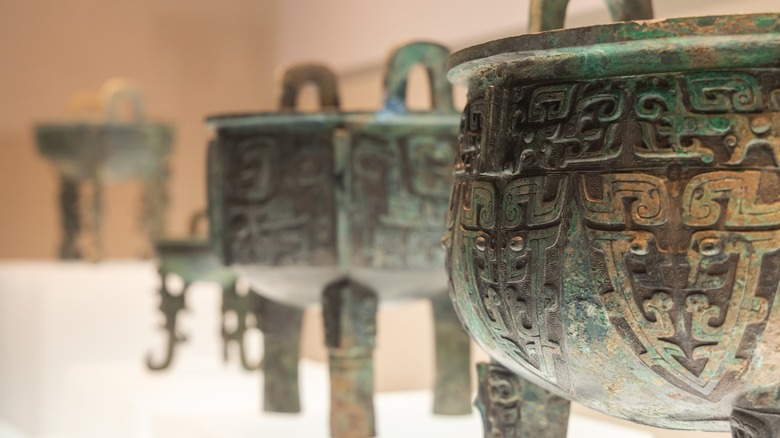Tips On Cleaning Bronze
Thousands of years ago, bronze was commonly used to create items like jewelry, tools, and weapons — in fact, the period in history from around 3300 BC to 1200 BC is named The Bronze Age. It is a metal alloy made from copper and tin, and can have components like nickel, lead, and zinc, among others, added to it. When used outdoors, bronze can oxidize and develop a stippled green surface appearance known as verdigris. This patina can help prevent deterioration, especially in settings where saltwater is prevalent, explains Corrosionpedia.
While bronze has many applications in industrial settings and is for useful items like faucets and hardware, it is also cast to make decorative objects commonly found in and around the home, such as statues, urns, and clocks. These items can last a lifetime or more, and as a bonus, they don't need a ton of care. Sooner or later, you might find the need to clean a bronze object though. Learning more about how to successfully tackle that task is important before you begin.
When and how often to clean bronze
First, you should know there are some objects that shouldn't be cleaned well enough to remove the verdigris, from the surface. This includes many items that have developed that patina with age, as noted by Irv Graham, an appraiser, and expert on Chinese antiques. Doing so, as with many types of antiques made of copper, can utterly devalue them since collectors view that green as a thing of beauty rather than dirt. As Graham suggests, it is wise to consult an expert before seriously cleaning any type of antique or collectible that might be exceedingly valuable to avoid ruining it.
If you have recently purchased a bronze item for your home, it probably won't need more than a regular dusting to keep it looking good for quite some time. When a bronze object needs more attention, you might be surprised to find that the solution is, quite literally, a simple one.
How to clean bronze
Bronze collector, Richard Rist of The Large Art Company, found the solution best suited for cleaning bronze is merely mild dish soap mixed with clean water. They suggest mixing several drops of soap in a bowl with clean water, moistening a fresh cloth with the liquid, and wiping down the surface of your bronze. If needed, you can employ a damp toothbrush to clean hard-to-reach spots. Rinse your cloth and toothbrush with clean water, and then give the object another good wipe to rinse it.
Allow a few hours for your bronze to thoroughly dry. You can then can consider waxing it with a clear paste wax (steering clear of waxes intended for cars, since they usually dry white) for further preservation. Using a paintbrush or a clean rag, apply a light coat over the entire surface. After about 20 minutes of drying time, buff your bronze with another clean cloth to restore its original shine.
Rist also warns to avoid soaps with lemon and other additives, and that oiling bronze is neither necessary nor advisable. Never use cleaners with chlorine, like bleach, as they can trigger a problem called bronze disease. Brown University notes that bronze disease can sometimes be confused with patina, so consult an expert if you're not sure what's up. Also, if you have bad tap water, consider using distilled bottled water for cleaning bronze instead.


